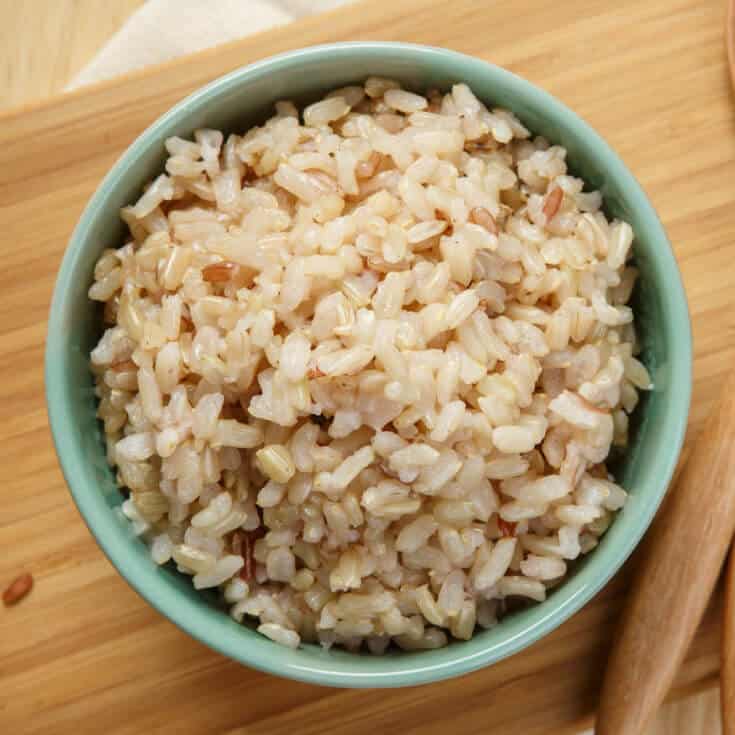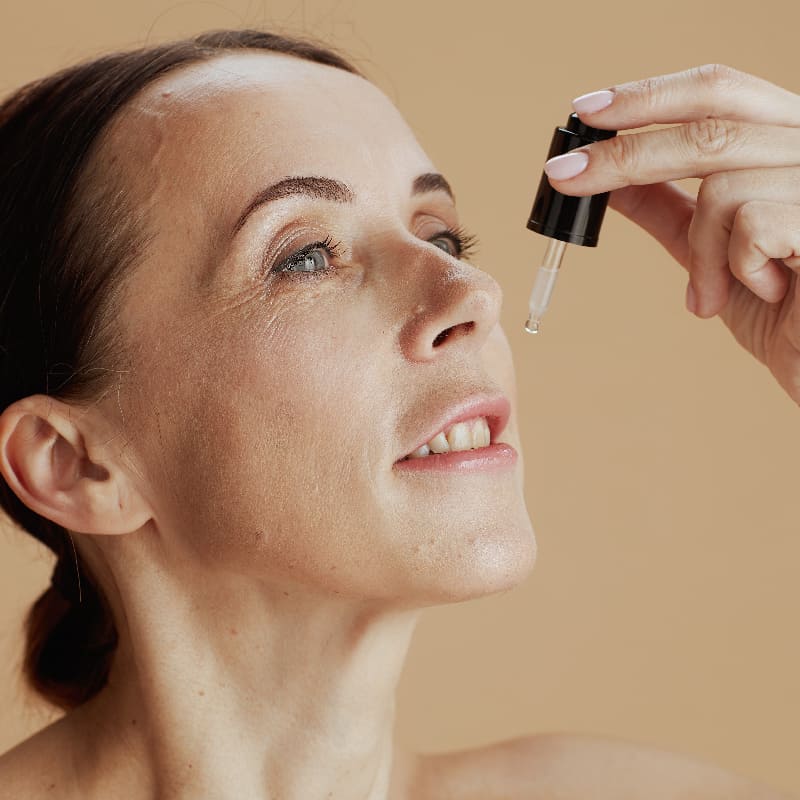This Dr. Axe content is medically reviewed or fact checked to ensure factually accurate information.
With strict editorial sourcing guidelines, we only link to academic research institutions, reputable media sites and, when research is available, medically peer-reviewed studies. Note that the numbers in parentheses (1, 2, etc.) are clickable links to these studies.
The information in our articles is NOT intended to replace a one-on-one relationship with a qualified health care professional and is not intended as medical advice.
This article is based on scientific evidence, written by experts and fact checked by our trained editorial staff. Note that the numbers in parentheses (1, 2, etc.) are clickable links to medically peer-reviewed studies.
Our team includes licensed nutritionists and dietitians, certified health education specialists, as well as certified strength and conditioning specialists, personal trainers and corrective exercise specialists. Our team aims to be not only thorough with its research, but also objective and unbiased.
The information in our articles is NOT intended to replace a one-on-one relationship with a qualified health care professional and is not intended as medical advice.
Caprylic Acid: the Saturated Fat that Fights Candida, Infections & Acne
April 1, 2024

Caprylic acid is a type of beneficial saturated fatty acid that has antibacterial, antiviral, antifungal and anti-inflammatory properties. It’s been linked to prevention of urinary tract infections, bladder infections, Candida, sexually transmitted diseases, oral infections like gingivitis and many other conditions.
What does caprylic acid do for the body? As one of the main fatty acids found in coconut oil, it has recently become widely known for its antifungal effects, especially in regard to keeping the digestive and reproductive organs — including the bladder, gut and urethra — functioning properly.
One of the most popular potential uses or benefits of caprylic acid, whether consumed as part of foods or taken orally in tablet form, is preventing the overgrowth of yeast-like fungus that can live and grow in your intestines. But this is only just one of several possible caprylic acid benefits.
What Is Caprylic Acid?
It sounds like it may be pretty beneficial to health so far, but what is caprylic acid? As a saturated fatty acid, caprylic acid (also sometimes called octanoic acid) contains eight carbon atoms, making it a medium-chain fatty acid (MCFA).
Is caprylic acid the same as coconut oil? Along with capric acid and lauric acid, caprylic acid is one of the three primary fatty acids found in coconut oil. So it’s a component of coconut oil, but it is not the same thing.
What foods contain caprylic acid? It can be found in foods like coconut and coconut oil, cow’s milk, and human breast milk. Is caprylic acid a probiotic? It’s definitely not a probiotic, but it does help to support gut health and the internal probiotic environment we all have.
While more research is still needed to confirm its potential uses, research suggests this fatty acid has positive applications for fighting inflammation, cancer, age-related cognitive decline and circulatory problems.
Health Benefits
1. Works as a Natural Antibacterial
Taken internally, caprylic acid helps naturally reduce yeast growth within the gastrointestinal tract while helping beneficial bacteria thrive. Studies reveal that caprylic and capric acid showed antibacterial activity against E. coli, and caprylic acid had the highest activity. It also showed antibacterial activity against Salmonella species and had significant antibacterial activity against Cronobacter strains.
A higher population of “good bacteria” in the gut raises immune function and has numerous implications: lower inflammation levels, less risk for allergies, better brain function, improved hormonal health, lower risk for obesity and much more.
To further boost its effects, some experts also recommend taking in natural immune-enhancers like probiotic foods, oregano oil and omega-3 fish oil supplements along with caprylic acid to help repopulate the gut with healthy bacteria, reduce inflammation and restore a healthy “gut-brain connection.”
2. Fights Candida as an Antifungal
When it comes to fighting candida the natural way, caprylic acid also has potential. Candida is a condition that occurs when an overgrowth of yeast fungus develops in your gut. It’s very common, especially among woman, and is associated with uncomfortable Candida symptoms like abdominal bloating, constipation, fatigue, irritable bowel syndrome, depression and sugar cravings.
Because caprylic acid acts as a natural yeast-fighting agent, it’s believed that it can penetrate the cell membranes of candida yeast cells and cause them to die off, detoxifying the digestive tract and speeding up the healing process.
Researchers have found that this fatty acid taken orally rapidly reduces symptoms associated with viral and fungal infections like Candida and Chlamydia. A 2001 report published in Acupuncture and Electrotherapeutic Research found that caprylic acid is superior in terms of efficacy, and also less expensive, than drugs such as Diflucan for treating these infections.
The same study suggests that the best treatment for these types of conditions is a combination of concentrated caprylic acid taken orally along with omega-3 fish oil supplements. Together these act as strong antiviral agents and increase normal cell telomeres.
A 2012 animal study also showed that capric acid and caprylic acid inhibited Candida mycelia growth at very low concentrations.
3. Helps Prevent and Treat Yeast Infections
Aside from Candida, yeast can cause other types of internal or external yeast infections that show up on the skin, genitals, toes and elsewhere.
Caprylic acid can help get rid of yeast infections — as toe fungus, oral infections, vaginitis in women, jock itch in men and ringworm are all examples of yeast infections that can be prevented or treated with little to no side effects.
4. Treats Skin Infections and Acne
Considering how popular various coconut oil uses for skin have become, it’s no surprise that the strong antibacterial and antimicrobial effects of caprylic acid have been show in many human and animal studies to help improve infections that show up on the skin.
Caprylic acid, along with its derivatives called monocaprylin and sodium caprylate, are capable of fighting bacteria that live on the skin and cause infections, including Dermatophilus congolensis and acne.
Dermatophilosis is a skin disease that can affect many species of domestic and wild animals like horses and cattle, in addition to humans. It results in a bacterial infection that forms painful dry scabs on the skin and can be irritating and embarrassing, similar to eczema and acne.
Coconut oil, the best source of naturally occurring caprylic acid, is known to naturally improve acne and reduce skin inflammation. By applying coconut oil with its naturally occurring caprylic acid acne may become less and less of a problem for some users. This is why coconut oil makes a great natural skin moisturizer, addition to homemade scrubs or lotions, facial cleanser, and shaving balm.
5. Helps Treat Inflammatory Digestive Disorders
The caprylic acid triglyceride may be helpful for some digestive orders. Medium-chain triglycerides (MCTs or MCT oil) are often administered to patients with Crohn’s disease or short-bowel syndrome. Up until recently, little was known about the effects of MCFAs and MCTs on intestinal inflammation, but studies now suggest that these fatty acids help suppress secretion of inflammatory enzymes and cells, reducing Crohn’s symptoms like pain, bloating, bleeding and bowel problems.
MCTs seem to help protect the epithelium, a line of defense living in the gut that acts like a border against an array of substances in the intestines, including toxic residents and pathogenic micro-organisms. In people who have inflammatory conditions where a healthy mucus barrier is lost, including those with Crohn’s disease, their intestinal epithelial cells secrete a wide array of cytokines after stimulation with pro-inflammatory cytokines or bacterial products.
Although the precise mechanism that leads MCTs to suppress this process is still not fully understood, it’s believed that they help inhibit inflammatory cytokine gene inhibition and, therefore, lower the body’s immune responses that further aggravate the gut lining.
Best Food and Supplement Sources
The very best source of caprylic acid is coconuts, especially coconut oil, which is a great way to get concentrated medium-chain fatty acids. Other sources include full-fat cow’s milk, peanut butter, palm fruit oil and even human breast milk.
Aside from obtaining from whole food sources, caprylic acid supplements are now becoming more widely available. There isn’t a nutritional requirement for this fatty acid, so no recommended daily intake has been established. However, health professionals often recommend taking about 500 to 1,000 milligrams, three times a day in capsule form, for optimal results.
Risks and Side Effects
If you’re new to taking caprylic acid, start slowly to prevent stomach pains. Taking a 500 milligram capsule once or twice a day is recommended in the beginning, and then increasing the dosage as you feel comfortable for about three to four months until the condition improves. It’s believed that slowly increasing the dosage helps yeast die off effectively and won’t shock your system into producing even more of an autoimmune reaction.
Are there any caprylic acid dangers? It is generally recognized as safe when taken in capsule form, and little to no caprylic acid side effects have been reported at these levels. However, large amounts of this supplement mixed with other medium-chain triglycerides have caused gastrointestinal problems in a small number of people, but this isn’t common and is generally nothing to worry about.
One thing to note is that capsules of caprylic acid aren’t recommended for breastfeeding or pregnant women because they can cause some nausea and aggravate existing digestive problems. If you’re interested in taking caprylic acid breastfeeding, while pregnant or if you have an ongoing medical condition, check with your healthcare provider first.
Final Thoughts
- Caprylic acid is a type of beneficial saturated fatty acid that has antibacterial, antiviral, antifungal and anti-inflammatory properties.
- Caprylic acid foods include coconut and coconut oil, cow’s milk, and human breast milk.
- This fatty acid is best known for its ability to fight fungus like Candida that can live in the body and promote optimal gut health.
- It may also be helpful with acne and digestive issues like Crohn’s disease.
- While more studies are warranted to confirm its potential uses, research to date suggests caprylic acid has positive applications for fighting inflammation, cancer, age-related cognitive decline including Alzheimer’s disease, autism and circulatory problems.
- If you’ve never take this fatty acid in supplement form, start slowly to prevent stomach pains.











